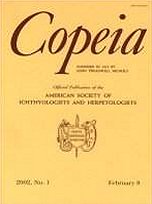A recent morphological analysis demonstrated that Cyclothone, one of four currently recognized gonostomatid genera, was nested within Gonostoma, rendering the latter paraphyletic. In an attempt to resolve the interrelationships of Gonostoma and Cyclothone using molecular data, we determined the nucleotide sequences of a portion of the mitochondrially encoded 12S and 16S ribosomal RNA genes from 11 gonostomatids, including all seven valid Gonostoma species, and Diplophos taenia as an outgroup. Secondary structure-based alignment resulted in a character matrix consisting of 566 base pairs of unambiguously aligned sequences from the two genes, which were subjected to phylogenetic analyses using maximum-parsimony and maximum-likelihood methods. The resultant tree topologies from the two methods were congruent, with many nodes being strongly supported by various tree statistics. As in the morphological analysis, the molecular data indicated the monophyly of Gonostoma Cyclothone and paraphyly of Gonostoma, although the intrarelationships of Gonostoma differed greatly from those suggested by the morphological data. The molecular data supported the existence of two basal, paraphyletic clades within Gonostoma, the first comprising two light-colored species (G. atlanticum, G. denudatum) and representing a sister clade of Cyclothone, and the second, five dark-colored species (G. ebelingi, G. elongatum, G. longipinnis, G. gracile, G. bathyphilum). Although several alternative classifications exist that reflect the molecular phylogeny, the resurrection of Sigmops Gill, 1883 for the clade of Gonostoma comprising five dark-colored species is proposed to maximize the information content in the classification.
How to translate text using browser tools
1 May 2000
Molecular Systematics of the Deep-Sea Fish Genus Gonostoma (Stomiiformes: Gonostomatidae): Two Paraphyletic Clades and Resurrection of Sigmops
Masaki Miya,
Mutsumi Nishida
ACCESS THE FULL ARTICLE





